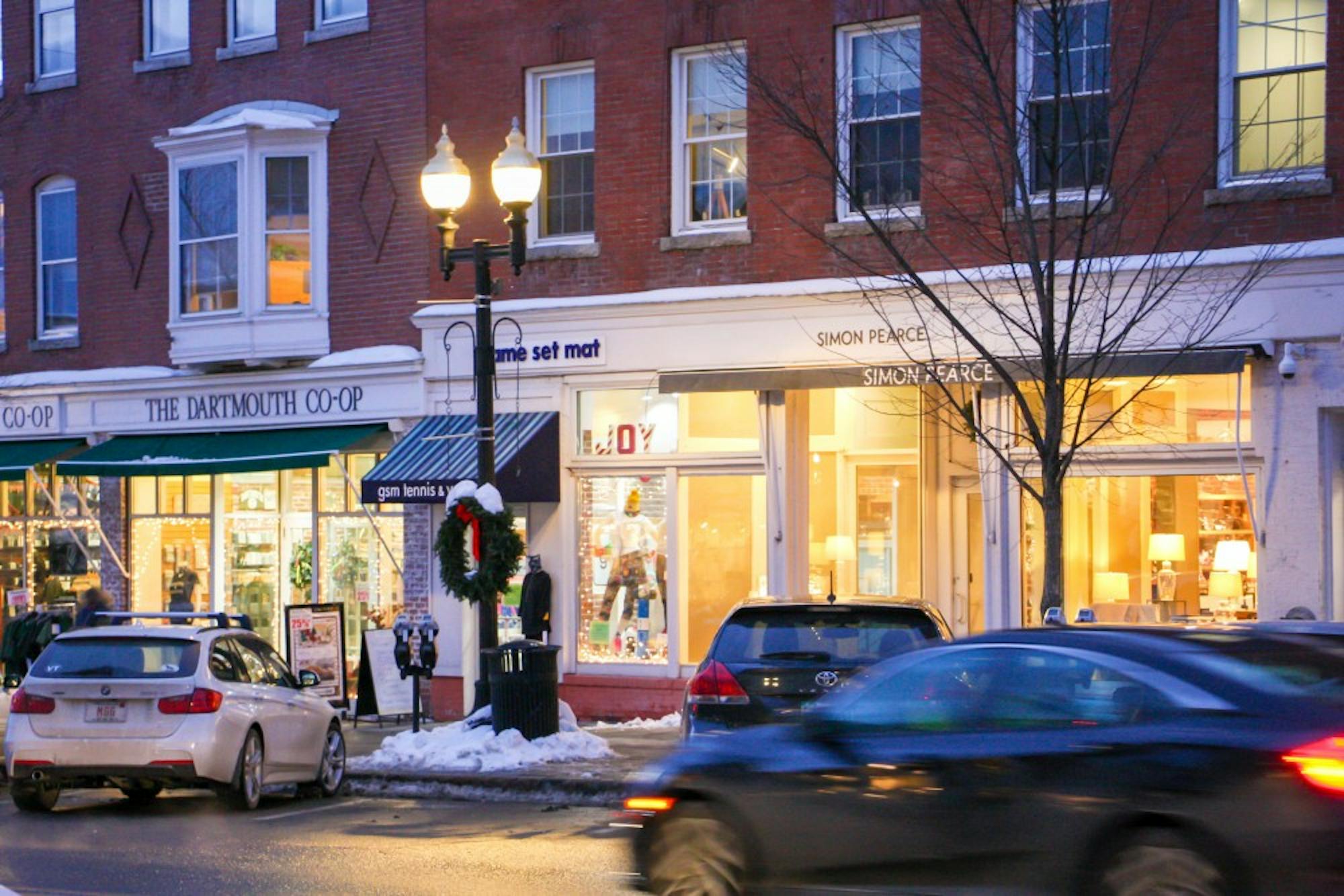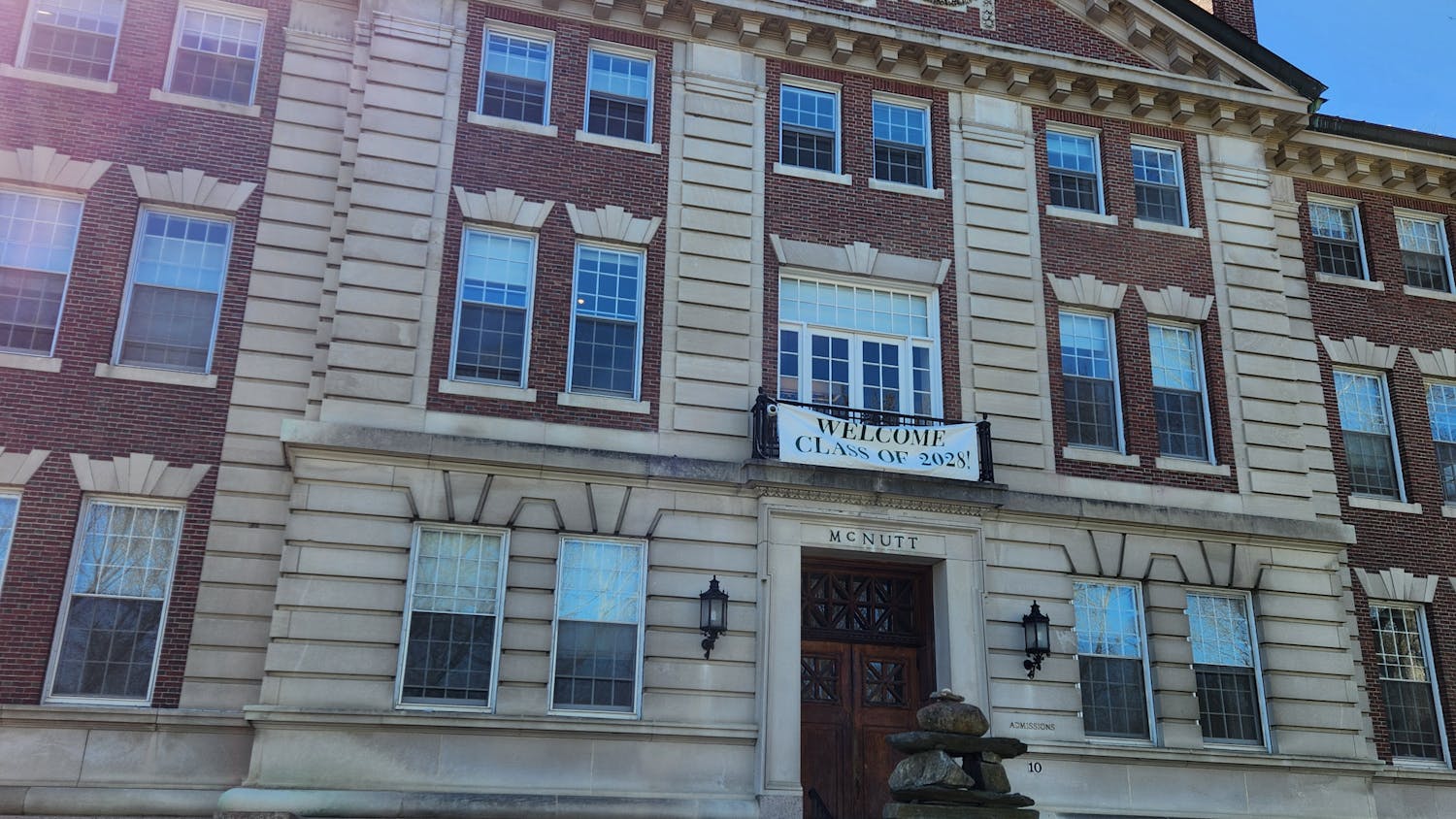Coming back to Hanover in the winter is like coming back to a different world: The entire campus is coated in a layer of beautiful snow, making everything glitter. Seeing the college looking this picturesque makes it even more shocking to travel to towns like Lebanon and White River Junction, where the slush has already turned gray, and white buildings with green shutters are replaced with boarded-up storefronts and weather-torn houses. Despite being located less than an hour away from Hanover, these towns are peppered with signs of poverty and neglect that are not often found in Hanover.
Hanover was founded in 1761 and the College followed soon after in 1769. Hanover and Dartmouth are practically indistinguishable from each other. Many of the College’s senior and tenured faculty members call the town home, contributing to Hanover’s estimated median household income of $94,063 for the period from 2010 to 2014.
The town’s and Dartmouth’s embedded history is partly responsible for the disparity in resources between Hanover and some of its Upper Valley neighbors. Postdoctoral fellow Garrett Nelson of the geography department, whose research focuses on the connections between social change and landscapes, explained that the town of Hanover has a cultural capital that impacts the makeup of its residents.
“There’s kind of a gradient as you move farther and farther away, so the College’s administrative employees tend to live one or two towns out,” Nelson said. “Custodial and service employees probably live four and five towns out, and that’s partly because of housing prices, but it’s also partly because of the kind of cultural associations of a place like Hanover that’s seen as much more elite.”
For the period of 2011 to 2015 the median annual household income of Lebanon, New Hampshire was $53,004, about half of Hanover’s. For White River Junction, the median household income was even lower at $39,652 for 2013 to 2015. Nelson attributed much of this economic inequality to a disparity in quality of education.
“In New England, each town is a school district,” Nelson said. “School districts are funded by local property taxes, and local property taxes are a function of how valuable local property is.” A town like Hanover with relatively expensive property generates more money off of property taxes, which allows it to fund its school district generously, Nelson explained. This makes the school district more attractive, which drives property values even higher.
“There’s this circular effect, where people want to move to a town like Hanover because it has a very elite public high school, and you can only go there if you live in Hanover.”
Hana Dai ’20, who grew up in Hanover and attended Hanover High School, said she sometimes noticed divisions between students at her high school and students who attended schools in the surrounding areas.
“I didn’t really notice it until high school, but Hanover and Lebanon have this sports rivalry, and sometimes it turns into a ‘spoiled rich kids’ kind of stereotype,” Dai said. “I never played sports, but I was definitely aware that stereotype existed. I really noticed that kids from other schools in New Hampshire didn’t have the same resources as I did. I started to see that divide for what it was.”
It is not uncommon for a college town to contrast so starkly with the area surrounding it. Nelson explained that many college towns across the country dwarf the towns that surround them in terms of income and quality of education.
“You tend to think of the classic picture of rich students right next door to urban, poor communities that are often classed with racial minorities,” Nelson said. “You have that with Yale [University] in New Haven. The University of Chicago is another great example of that, where the university is basically an island in Chicago’s very African-American and poor South Side.”
Hanover and the towns around it are extremely white, making the Upper Valley’s brand of inequality less racially marked than cases such as University of Chicago or Yale. However, the economic disparity also leads to interesting differences in political affiliation between the towns in the area.
“You have a town like Lyme, which is very liberal in terms of its electoral politics,” Nelson said. “Votes for democrats, very white, very wealthy. You don’t have to go too much further until you’re in a town like Dorchester, New Hampshire, which is very right wing in terms of who it votes for, but it’s still very white, much poorer than a place like Lyme.”
Despite the political and economic divisions, the College has made efforts to bridge the gap between the Dartmouth-Hanover area and the surrounding community. For example, in environmental studies professor Terry Osborne’s eco-psychology class Environmental Studies 7, “COVER Stories,” students work with COVER Home Repair, a White River Junction based nonprofit organization that aims to provide needed construction services to community members who can’t afford them. Students aid in a variety of projects such as home repairs, weatherization or making a home handicap-accessible. Osborne noted the surprise he saw in his students when they realized how different surrounding towns differed from Hanover.
“I’ve lived here a long time, so I clearly am aware of the disparities in resources in geography between certain towns, but it gets shown most clearly when I’ve seen students go off campus as part of COVER Stories and are stunned by the difference in resources,” Osborne said. “It’s just something that not many students who go here have been exposed to.”
Nelson attributed some of the reason for Dartmouth students’ relative ignorance of the poverty that lies beyond Hanover’s town limits to the College’s desire to perpetuate itself as a global institution, focusing on solving problems of inequality all over the world, rather than on solving those right here at home.
“I think there’s a tendency when we think about communities in need to either imagine the global poor, in places that are very distant from here, or in the United States we think of the urban poor,” Nelson said. “The rural poor that are right next door to Dartmouth sometimes aren’t as much on our imaginative radar. I think that sometimes Dartmouth can forget that it’s in a neighborhood that does have a lot of social needs and that there are opportunities to serve a community without having to get on an airplane.”
The best way to combat the barriers that divide Hanover and other towns in the Upper Valley is raising awareness among students, faculty and the Dartmouth community, while continuing the progress made in connecting volunteer efforts at the College with the Upper Valley.
“I think that’s a really important thing that’s happened much more intensely over the last five years — that the efforts have intensified and that Dartmouth recognizes that there are many really important reasons to keep the broader upper valley community healthy, to have communities be full and resourced and not forgotten,” Osborne said.
Students and faculty alike who call Hanover home must continue not to forget that the bubble they live in is surrounded by those who need their help, and that we are all part of the same community.




